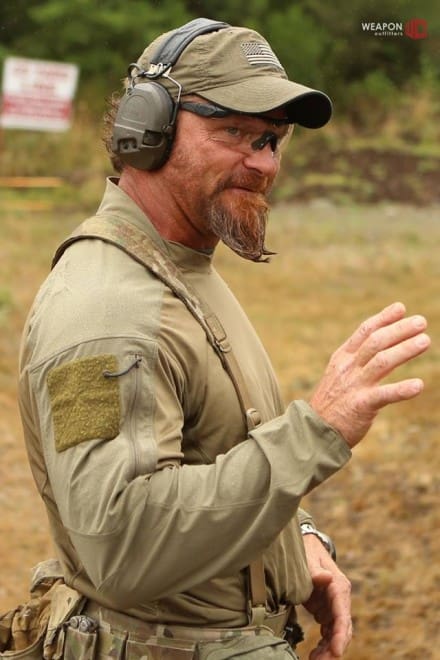Because I’ve heard it said that ‘Holstering’ a pistol is an ‘Administrative’ move, I would argue that there is true merit in holstering a pistol the same way we draw a pistol on two different fronts.
One is that in the tactical world, we must sometimes have to deescalate and go ‘Hands On’. We must do this without taking our eyes off of the threat.
Two, when practicing a draw stroke, the best draw stroke is nothing more than holstering in reverse. This was said to me by Rob Leatham some decades ago. So, when practicing a draw stroke, why not double the amount of meaningful repetitions by holstering the same way we drew?
…Only one is in reverse.
Patrick McNamara
SGM, US Army (Ret)
Patrick McNamara spent twenty-two years in the United States Army in a myriad of special operations units. When he worked in the premier Special Missions Unit, he became an impeccable marksman, shooting with accurate, lethal results and tactical effectiveness. McNamara has trained tactical applications of shooting to people of all levels of marksmanship, from varsity level soldiers, and police officers who work the streets to civilians with little to no time behind the trigger.
His military experience quickly taught him that there is more to tactical marksmanship than merely squeezing the trigger. Utilizing his years of experience, McNamara developed a training methodology that is safe, effective and combat relevant and encourages a continuous thought process. This methodology teaches how to maintain safety at all times and choose targets that force accountability, as well as provides courses covering several categories, including individual, collective, on line and standards.
While serving as his Unit’s Marksmanship NCO, he developed his own marksmanship club with NRA, CMP, and USPSA affiliations. Mac ran monthly IPSC matches and ran semi annual military marksmanship championships to encourage marksmanship fundamentals and competitiveness throughout the Army.He retired from the Army’s premier hostage rescue unit as a Sergeant Major and is the author of T.A.P.S. (Tactical Application of Practical Shooting). He also served as the Principle of TMACS Inc.
Gunfighter Moment is a weekly feature brought to you by Bravo Company USA. Bravo Company is home of the Gunfighters, and each week they bring us a different trainer to offer some words of wisdom.

















































































































